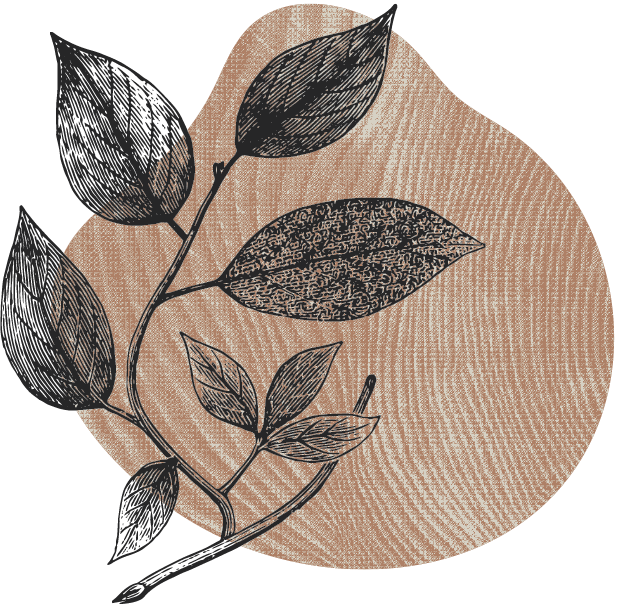Proper Pruning Techniques


Planting mast-producing shrubs and fruit trees is just one step in creating a more productive landscape. It would be great if you could just set it and forget it, but just like weeding the garden, pruning promotes production, particularly in new growth. Safety might be another consideration for pruning, especially in situations with nearby power lines, travelways, or structures. Removing dead, diseased, damaged, insect-infested, or rubbing branches enhances plant health. Pruning for shape and form will improve aesthetics and, often, the health and production of the tree. Also, pruning at an early age “trains” newly planted trees to grow the right way. Realizing all these benefits requires proper pruning techniques.
There are a couple of steps to take before the actual pruning process. One is a quick visual inspection. Note your stock and identify what is present and what requires removal. Next, ensure your pruning tools are sharp. Dull tools produce ragged cuts and may strip bark. One-hand pruning shears with curved blades work best when pruning young trees. Even better are models with a ratchet feature that allows the pruning of large branches. Some situations, like mature trees, may call for loppers, a pole pruner and saw, or a chainsaw.
There are several common pruning strategies, each with a slightly different purpose. Crown thinning involves removing upper branches to increase light penetration and air movement while promoting better form and structure, which may be more common for mature trees. Generally, you should not remove more than 1/4 of the living crown in a single season.
When crown thinning, it is also recommended to retain branches with “U” shaped angles of attachment and remove those with “V” shaped angles. The latter angle often forms “included” bark – a wedge of inward-rolled bark that weakens the union, making it more susceptible to cracking and breaking.
Crown raising – also more common on mature trees – involves removing lower branches and no more than 1/3 of the total live crown. Most often, crown reduction is preferred when a tree has outgrown its available space, such as when it may be touching overhead utility lines. Even when done correctly, it can be damaging, and a better option might be to remove and replace the tree with a younger one.
There are some general guidelines for proper pruning. One is to make pruning cuts where a branch attaches to the stem. Branch and stem tissues are contiguous but remain separate. Proper pruning cuts here reduce stem tissue decay and enhance the growth of woundwood, promoting healing.
Where a branch meets the stem or central leader, there is typically a branch bark ridge and collar at the base. Cutting above this juncture prevents flush cuts, injuring stems and promoting decay. Conversely, cutting too far above the collar – stub cutting – delays wound closure and provides entry to fungi that can kill the cambium and delay or
prevent the formation of woundwood, which helps the tree heal.
Pruning heavy, large branches with a saw may require a three-step pruning process. The first involves a shallow notch on the underside of the branch, outside the branch collar. Cutting a shallow notch prevents bark tearing. Next, cut the branch through, leaving a short stub. Finally, cut off the stub outside the branch ridge and collar.
Tipping or shortening smaller lateral branches is sometimes used to reduce crown width. This method is applicable when spacing is an issue or to improve branch structure. Make a sharp, clean cut at a slight angle approximately 1/4 inch above a lateral bud or branch. Favor a bud that will grow in the desired direction (outward or upward).
Lateral branches sometimes produce water sprouts – vigorous, upright shoots that take nutrients away from productive branches and ruin structure. Similarly, suckers may sprout from the roots or base of a tree, especially for soft mast species. Planters should prune them promptly. Heavy pruning can increase sprout production, so inspect and prune trees regularly. It was once common practice to paint pruning cuts to prevent decay. It is unnecessary, but it may be an option considering aesthetics.
When you prune can be just as important as how you prune. For deciduous trees, it is best to prune during the dormant season. The dormant season makes it easier to visualize the branch structure. It also maximizes wound closure in the growing season, reduces disease transmission, and discourages excessive sap flow from wounds, which might attract insects.
Seasonality also applies to transplanting, which calls for a different type of pruning. Here, planters should prune the roots in the fall and transplant the tree the following spring. For large trees, it may be advisable to prune the roots a year before transplanting. Cut through existing roots on smaller trees with a spade inside the edge of the future root ball for proper root pruning. Trenching may be a better option for older, more established trees. It involves digging a trench 8-12 inches wide and 12 inches deep around the outer edge of the future root ball, then refilling the trench with soil high in organic matter. Both techniques promote the growth of young feeder roots, enhancing establishment in the new location.
Proper pruning is most important during the early stages of growth. It helps young trees and shrubs get established so they will be productive sooner and longer. Once established, they can withstand a lot of dead branches and poor form, but periodic pruning of older trees will boost production.
The whole process of proper pruning may seem a little intimidating, though it should not. Consult the USDA Forest Service local county Extension Service agent or the Chestnut Hill Outdoors Learning Center when in doubt. Another option is simply hiring a certified arborist.


